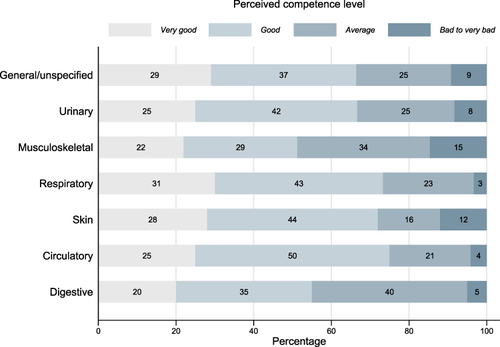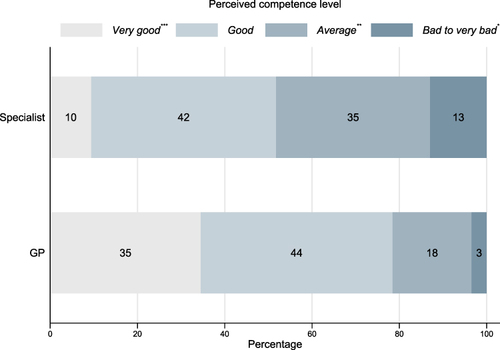Figures & data
Table 1 Participants' Characteristics
Table 2 Self-Reported Reasons for GP Visits by Health Problem
Table 3 Self-Reported Reasons for Encounter by First Contact of Care
Table 4 Health Problems Managed by GPs by First Contact of Care
Figure 1 Perceived competence of GPs in managing SCI health problems by reasons for encounter. aFollow-up visit for existing medical problem, test results, etc. bDiagnostic, screening, and vaccination. cMedication refills, prescription renewal, etc. dReferrals to specialist, hospital, diagnostic, etc. eCompleting forms or providing certificates, etc. fMedical advice or home visits, etc. 100% is the total number of participants in each specific category responding to the competence level. Mann–Whitney-U test was used to measure the significant association between the reason for the encounter and the perceived competence of GPs, and no relation was found to be statistically significant at P < 0.05.

Figure 2 Perceived competence of GPs in managing SCI health problems by top 7 health problems. Health problems according to chapters of the ICPC-2. 100% is the total number of participants in each specific category responding to the competence level. Mann–Whitney U-test was used to measure the significant association between health problem and the perceived competence of GPs, and no relation was found to be statistically significant at P < 0.05.

Figure 3 Perceived competence of GPs in managing SCI health problems by first contact of care. 100% is the total number of participants for each competence level. Pearson’s chi-square test was used to measure the significant association between the perceived competence level of GPs in managing SCI health problems and the first contact of care; *P < 0.05, **P < 0.01, ***P < 0.001.

